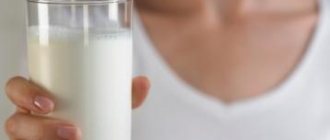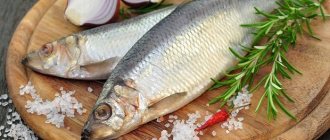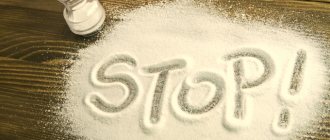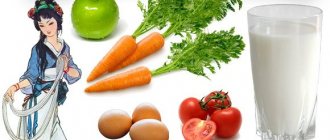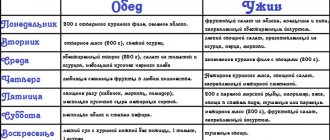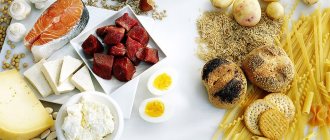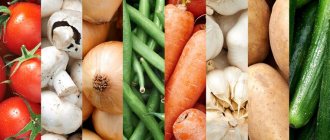Hepatitis or inflammation of the liver is a consequence of the adverse effects on the organ of viruses, drugs, alcoholic beverages and other toxic substances. Despite the prescription of treatment depending on the specific causes, diet for liver inflammation is essential. Usually doctors prescribe table No. 5. This diet allows you to minimize the consequences of an inflamed liver, improve overall well-being and stabilize the functioning of the organ.
An inflamed liver requires a diet
General rules
Hepatitis (inflammation of the liver), despite the variety of forms (alcoholic, viral, toxic, fatty liver) have similar structural changes in the liver. The main factors causing the inflammatory process are the same - disturbances in the metabolism and oxidation of lipids in liver cells, the toxic effect of excess amounts of free fatty acids and lipid peroxidation, which is the direct cause of the death of hepatocytes . Over time, as hepatitis progresses, fibrosis , then cirrhosis and often liver failure .
Hepatitis caused by viruses A , B , C , D , E , F , G have different outcomes. Hepatitis A and E are acute and end in recovery. Viruses B and D cause acute and chronic processes. Virus C most often leads to the formation of chronic hepatitis (in 50–75% of infected people), with the progression of the disease and the development of cirrhosis in every fifth patient.
In the group of toxic liver lesions, drug-induced hepatitis , caused by hepatotoxic drugs, occupies a special position. These are: cytostatics, antituberculosis, NSAIDs, antiarrhythmics. Oral contraceptives and anabolic steroids can cause cholestatic hepatitis .
Fatty liver disease (it can be of alcoholic or non-alcoholic origin) creates favorable conditions for the development of inflammation with the subsequent development of fibrosis . The accumulation of fat in the cell itself initiates the inflammatory process. And as fat accumulates, hepatocytes become more vulnerable to any toxic effects, which in turn provokes an inflammatory process in the liver.
All these diseases are treated differently. However, in all these cases, the diet for liver inflammation should be aimed at sparing it and creating favorable conditions to reduce the activity of the inflammatory process. In case of liver diseases, the basis of nutrition is the regularity of food intake, its gentle nature, the quality of products and nutritional value.
In case of exacerbation of chronic liver diseases, patients are subject to hospitalization and bed rest is recommended. During this period, it is recommended that food be processed mechanically (boiled, pureed, or passed through a meat grinder twice) and adherence to a meal schedule (at a strictly defined time and at least 5 times a day). Cooking dishes from minced meat reduces the mechanical load on the gastrointestinal tract and promotes complete digestion.
Meals should be fractional and necessarily varied. When the process subsides, when it is possible to expand the range of products, new ones should be introduced in small portions and only one product per day - this way, if discomfort appears, its cause can be established and the product that caused it can be eliminated.
It is not recommended to use:
- Fried foods.
- Any shelf-stable products, as they contain concentrates, preservatives and flavoring additives. These include canned food, instant soups, freeze-dried foods, dry juices and drinks, as well as shelf-stable confectionery products.
- Products that irritate the gastrointestinal mucosa: seasonings, vinegar, spices, smoked meats, vegetables rich in essential oils (radish, onion, radish, garlic, sorrel, celery) and refractory fats (goose, lamb, pork).
- Mushrooms (in any form), legumes (cause increased gas formation).
- Raw unripe berries and fruits (green apples, cranberries, red currants).
- The consumption of tomatoes and sauerkraut is limited.
For fatty hepatosis, in addition to all general nutritional recommendations, a lipid-lowering diet and weight loss is recommended. A minimum calorie intake is allowed - within 1200-1500. Weight loss reduces the activity of ALT, AST and helps reduce steatosis .
Recommended:
- Exclusion from the diet of margarine, animal fat, butter and the consumption of vegetable oils, seafood, fish, nuts (moderately due to the increased calorie content), olives - products containing polyunsaturated fatty acids.
- Reducing or eliminating cholesterol intake from foods - eliminating fish caviar, offal, egg yolks, raw smoked sausages, fatty meats and fatty dairy products.
- Exclusion of deep-fried and fried dishes.
- Reducing simple carbohydrates in the diet.
- Enrichment of food with vitamins (vegetables - Jerusalem artichoke, artichoke and fruits).
For all liver diseases, it is recommended to limit or exclude:
- Labor-intensive work.
- Active sports with prolonged and sudden efforts. Physical exercise should not cause fatigue and last 10-15 minutes, and walking should not exceed 2 km.
- Working the night shift.
- Long business trips, visiting saunas, steam baths, staying on the beach and in the solarium.
- Long-term driving, psycho-emotional stress, computer work (meaning long-term).
Diet for kidney disease
General rules
Nephritis is a whole group of kidney diseases that are inflammatory or immunoinflammatory in nature. This group includes immunoinflammatory diseases: glomerulonephritis (if the process involves the glomeruli of the kidneys) and tubulointerstitial nephritis - when the process affects the interstitial tissue of the kidneys, tubules and vessels located in the tissue, lymphatic ducts and nerve endings. In these diseases, the provoking factor is infection, and the resulting immune complexes settle in the glomeruli or intermediate tissue of the kidneys. This also includes pyelonephritis - inflammation of the renal pelvis caused by bacterial flora.
Symptoms of the diseases differ, which is explained by damage to various kidney structures. Thus, glomerulonephritis occurs with nephritic syndrome (edema, hypertension, hematuria). There is also increased protein excretion, which reflects the pathology of the glomerular apparatus. Pain appears in the lumbar region due to an increase in the size of the kidneys, and a decrease in urine output associated with a decrease in the glomerular filtration rate. Frequent infections that damage the glomerular apparatus include viral hepatitis. Kidney damage often develops against the background of chronic or active hepatitis B.
With pyelonephritis, patients complain of back pain and frequent urination. In the clinic, intoxication symptoms may prevail - fever, weakness, headache. A significant amount of bacteria is found in the urine, and ultrasound shows signs of deformation of the pyelocaliceal system.
With tubulointerstitial nephritis, there is a decrease in the specific gravity of urine. Each exacerbation of a renal infection increases the affected area, promoting fibrosis. This disease is characterized by an increase in irreversible changes in the kidneys (interstitial fibrosis) and a parallel decrease in their functionality.
All these diseases become chronic, and the concept of chronic kidney disease has now been introduced and its classification has gained recognition throughout the world. CKD includes any kidney damage, regardless of nosological diagnosis, and a decrease in kidney function that occurs for more than three months. It is diagnosed on the basis of albuminuria (proteinuria), kidney pathology detected by ultrasound and a decrease in glomerular filtration rate
medside.ru
Authorized Products
The diet for liver inflammation is organized within the framework of treatment Table No. 5 and should include:
- White bread (black if well tolerated) without burnt crusts, but well baked.
- The bread should be day-old or dried and you can consume no more than 300-500 g per day, depending on the patient’s weight. Crackers, dry biscuits and low-fat cookies.
- Soups made with vegetable broths, weak meat and fish broths with the addition of cereals and vegetables. You can prepare borscht and cabbage soup from fresh cabbage. When cooking, strong broths are excluded; for this purpose, when cooking meat or fish, the first broth is drained, then boiled until tender in a new portion of water.
- Lean beef, rabbit, veal, chicken, turkey. You can occasionally eat lean pork. Meat must be cleaned of fat and tendons, poultry from skin. Boiled or steamed portions can be served in pieces or as minced meat. Boiled meat can be baked.
- Low-fat fish (pike perch, perch, cod, bream, pollock, hake) boiled, baked, in pieces or chopped.
- Vegetables (potatoes, carrots, beets, pumpkin, white cabbage, cauliflower, zucchini, cucumbers). Avoid using tomato paste and limit your consumption of tomatoes. Vegetables can be eaten boiled, baked or raw, or served as side dishes.
- Salads from raw and boiled vegetables with vegetable oil and low-fat sour cream (not higher than 10%).
- Canned peas can be consumed as an addition to salads and soups - they do not cause bloating.
- You can add a little fresh dill and parsley, dried cumin seeds and bay leaves to your dishes.
- Various porridges prepared with water or with the addition of milk.
- It is allowed to eat casseroles with cereals and cottage cheese.
- You can include vermicelli and small pasta (as a side dish and casseroles) in your diet.
- Fermented milk products (bifidok, kefir, bifilife, bifidum-kefir, acidophilus). If flatulence, pain in the intestines, or loose stools occur, their use should be reduced or stopped.
- Sweet berries and fruits: fresh and baked apples, apricots, peaches, pears, overripe bananas, kiwi, persimmons, cherries, quinces, strawberries, currants, plums, prunes, figs, dates, dried apricots, raisins, pomegranates, watermelons, melons, grapes (if well tolerated), blueberries. They can be consumed raw and in the form of diluted juices, compotes, jelly and jellies. You can add a small amount of nuts (exclude peanuts) - chop thoroughly before use.
- Sugar (the amount should be limited), 1-2 teaspoons of honey, moderate amounts of marmalade, marshmallows, caramel, pastille, jam, toffee, jam.
- Up to 40 g of butter per day is used for seasoning ready-made dishes; mild cheeses are allowed.
- Refined and unrefined sunflower oil, corn oil, olive oil and others are used for preparing dishes and dressings.
- Liquid up to 2-2.5 l, including first courses. You can drink herbal teas, not strong tea, freshly prepared juices diluted with water (fruit, berries, vegetables), rosehip infusion, purified water. All drinks should not be drunk chilled.
Some recipes
For pain in the kidneys, it is recommended to use rosehip jelly. To prepare it you need to make 2 tbsp. infusion of tart berries. Next, take ½ cup of the prepared broth, dissolve 2 tbsp in it. l. sugar, bring to a boil and pour into the remaining liquid. Separately, pour a small spoon of gelatin with water, and after half an hour add it to the infusion. It is necessary to bring the ingredients to boiling point, then leave the resulting liquid to cool. Fruit soup is no less useful. To prepare it, you need to peel and cut into small cubes 20 g of pear, melon, apples and peaches. Pour boiling water over the peel and seeds, boil and leave. Next, add sugar, strain and add fruit cubes and previously cooked rice to the prepared liquid. When all the ingredients have been collected, the soup is boiled for 5-7 minutes, then poured into plates and seasoned with sour cream.
Tweet
Fully or partially limited products
- Confectionery, chocolate and its derivatives, products with cream (cakes, pastries), puff pastry and butter dough.
- Any coffee, cocoa, strong tea.
- All types of alcohol, carbonated drinks and canned juice concentrates, packaged juices.
- Fatty meat, liver, kidneys, fried foods, fatty poultry and fish, lard, cooking fats, lard, smoked poultry, loin, brisket, seafood, crayfish, salted fish.
- Mayonnaise, ketchup, hot sauces, vinegar, pepper, mustard, horseradish, pickled foods.
- Sorrel, radish, onion, spinach, radish, mushrooms, garlic.
- Limit the number of eggs to three per week and do not eat them raw.
- Whole milk and sharp cheese. The consumption of sour cream, sweet cheeses, fermented baked milk, fatty cottage cheese and yogurt is limited.
- Legumes and coarse vegetables, if cabbage causes bloating, it is also excluded.
- You should not eat okroshka and cabbage soup.
- Limit the consumption of salt and salty foods.
Table of prohibited products
| Proteins, g | Fats, g | Carbohydrates, g | Calories, kcal | |
Vegetables and greens | ||||
| canned vegetables | 1,5 | 0,2 | 5,5 | 30 |
| swede | 1,2 | 0,1 | 7,7 | 37 |
| peas | 6,0 | 0,0 | 9,0 | 60 |
| bulb onions | 1,4 | 0,0 | 10,4 | 41 |
| chickpeas | 19,0 | 6,0 | 61,0 | 364 |
| radish | 1,2 | 0,1 | 3,4 | 19 |
| white radish | 1,4 | 0,0 | 4,1 | 21 |
| beans | 7,8 | 0,5 | 21,5 | 123 |
| horseradish | 3,2 | 0,4 | 10,5 | 56 |
| spinach | 2,9 | 0,3 | 2,0 | 22 |
| sorrel | 1,5 | 0,3 | 2,9 | 19 |
Berries | ||||
| grape | 0,6 | 0,2 | 16,8 | 65 |
Mushrooms | ||||
| mushrooms | 3,5 | 2,0 | 2,5 | 30 |
| marinated mushrooms | 2,2 | 0,4 | 0,0 | 20 |
Nuts and dried fruits | ||||
| nuts | 15,0 | 40,0 | 20,0 | 500 |
| almond | 18,6 | 57,7 | 16,2 | 645 |
Snacks | ||||
| potato chips | 5,5 | 30,0 | 53,0 | 520 |
Flour and pasta | ||||
| vareniki | 7,6 | 2,3 | 18,7 | 155 |
| dumplings | 11,9 | 12,4 | 29,0 | 275 |
Bakery products | ||||
| buns | 7,9 | 9,4 | 55,5 | 339 |
| Rye bread | 6,6 | 1,2 | 34,2 | 165 |
Confectionery | ||||
| pastry cream | 0,2 | 26,0 | 16,5 | 300 |
| shortbread dough | 6,5 | 21,6 | 49,9 | 403 |
Ice cream | ||||
| ice cream | 3,7 | 6,9 | 22,1 | 189 |
Chocolate | ||||
| chocolate | 5,4 | 35,3 | 56,5 | 544 |
Raw materials and seasonings | ||||
| mustard | 5,7 | 6,4 | 22,0 | 162 |
| mayonnaise | 2,4 | 67,0 | 3,9 | 627 |
Dairy | ||||
| milk 4.5% | 3,1 | 4,5 | 4,7 | 72 |
| cream 35% (fat) | 2,5 | 35,0 | 3,0 | 337 |
| whipped cream | 3,2 | 22,2 | 12,5 | 257 |
Cheeses and cottage cheese | ||||
| parmesan cheese | 33,0 | 28,0 | 0,0 | 392 |
Meat products | ||||
| fatty pork | 11,4 | 49,3 | 0,0 | 489 |
| salo | 2,4 | 89,0 | 0,0 | 797 |
| bacon | 23,0 | 45,0 | 0,0 | 500 |
Sausages | ||||
| smoked sausage | 9,9 | 63,2 | 0,3 | 608 |
Bird | ||||
| smoked chicken | 27,5 | 8,2 | 0,0 | 184 |
| duck | 16,5 | 61,2 | 0,0 | 346 |
| smoked duck | 19,0 | 28,4 | 0,0 | 337 |
| goose | 16,1 | 33,3 | 0,0 | 364 |
Fish and seafood | ||||
| smoked fish | 26,8 | 9,9 | 0,0 | 196 |
| black caviar | 28,0 | 9,7 | 0,0 | 203 |
| salmon caviar granular | 32,0 | 15,0 | 0,0 | 263 |
| salmon | 19,8 | 6,3 | 0,0 | 142 |
| canned fish | 17,5 | 2,0 | 0,0 | 88 |
| salmon | 21,6 | 6,0 | – | 140 |
| trout | 19,2 | 2,1 | – | 97 |
Oils and fats | ||||
| animal fat | 0,0 | 99,7 | 0,0 | 897 |
| cooking fat | 0,0 | 99,7 | 0,0 | 897 |
Alcoholic drinks | ||||
| dry red wine | 0,2 | 0,0 | 0,3 | 68 |
| vodka | 0,0 | 0,0 | 0,1 | 235 |
| beer | 0,3 | 0,0 | 4,6 | 42 |
Non-alcoholic drinks | ||||
| soda water | 0,0 | 0,0 | 0,0 | – |
| cola | 0,0 | 0,0 | 10,4 | 42 |
| instant coffee dry | 15,0 | 3,5 | 0,0 | 94 |
| sprite | 0,1 | 0,0 | 7,0 | 29 |
| * data is per 100 g of product | ||||
Menu (Power Mode)
Compliance with dietary nutrition after acute hepatitis is recommended for 1.5 years, for chronic hepatitis - constantly. Alternating protein and cereal dishes every day will make the menu varied. Different ways of preparing them will also help with this.
Breakfast can consist of milk porridge (rice, buckwheat, semolina or oatmeal). You can complement the porridge with omelet or cottage cheese dishes.
For second breakfast or afternoon snack, you can eat baked apples, pumpkin porridge and juices.
Lunch first courses often consist of soups, and if desired and well tolerated, you can eat cabbage soup and borscht. In dishes, white cabbage is replaced with Savoy cabbage - it is less coarse and easier to digest.
At night - fermented milk drinks.
| Breakfast |
|
| Lunch |
|
| Dinner |
|
| Afternoon snack |
|
| Dinner |
|
| For the night |
|
| Breakfast |
|
| Lunch |
|
| Dinner |
|
| Afternoon snack |
|
| Dinner |
|
| For the night |
|
| Breakfast |
|
| Lunch |
|
| Dinner |
|
| Afternoon snack |
|
| Dinner |
|
| For the night |
|
Reviews and results
Many patients resorted to this therapeutic diet, having various diseases not only of the liver, but also of the biliary system. Their reviews confirm the need for proper nutrition, since the condition improves within a week: there is no pain and heaviness in the right hypochondrium, bitterness in the mouth and constipation disappear. The diet is easily tolerated and can be regarded as a healthy diet. The only inconvenience for many patients is the need for individual cooking.
- “... I have viral hepatitis C. I was on the Pegasys + Ribavirin regimen for six months, the result was positive. I feel fine and constantly monitor my nutrition, despite the fact that I have to cook separately. I understand that nutrition, in addition to treatment, is also important, as it reduces the load on the liver. I alternate boiled meat and fish, steamed cutlets, eat them with vegetables, and eat porridge separately. I consume little fat - only vegetable oil and butter. You won’t gain weight on such a diet, and you don’t always have an appetite”;
- “...Two years ago I became infected during a dental procedure, I am registered, the tests are calm. The doctor told me to follow a diet, not sunbathe and drink alcohol. He says there is no need for treatment yet. So I live like on a powder keg - I just get checked regularly, but I don’t know what will happen next. All that remains is proper nutrition, which must be observed throughout your life. I can say that this is not difficult for me. I have a small child (2 years old), so I cook for him and for myself - everything without frying, boiled or steamed. Vegetable casseroles with chicken meat turn out delicious, cottage cheese casseroles and fish soufflé (tasty both warm and as a snack in the form of a sandwich). The whole family loves fish, so I bake it in foil with vegetables and sour cream - everyone eats it. Cooking in a slow cooker helps - I bought it for the birth of my child. So I don’t see any difficulties with cooking”;
- “... When I have an inflamed liver, I always follow this diet. The fact is that in childhood I suffered from a severe form of Botkin’s disease that resulted in hepatitis. After physical and nervous stress, nutritional problems or after an acute respiratory viral infection, bad tests periodically pop up, and I begin to “feel” the liver - not much, but it’s not comfortable to walk with a weight under my rib. I don’t go to the hospital during such periods because of work (but I should, since work pressure and nerves do not allow me to completely relax and receive effective treatment). I start injecting Essentiale (I go to the clinic), then drink it in capsules and strictly monitor my diet. It takes a month to get the tests and condition back to normal. Nutrition is healthy and wholesome and we should stick to it constantly, but our laziness, disorganization and craving for forbidden delicacies prevent us from doing this. For two months I cook everything in a double boiler, and then the whole family also does not refuse dietary dishes. But then they get tired of it, and at the same time I get tired of it, and we gradually switch to the usual diet.”
Cleansing days
If you have kidney problems, it is useful to periodically reduce the load on the body by doing fasting days. Kidney unloading is prescribed only after a complete examination and correct diagnosis. Throughout the day, they consume exclusively one type of product, which must be useful and acceptable for kidney diseases. It is better to give preference to a fruit and berry table, preparing 350-400 g of apples, pears, and apricots. It is allowed to supplement the dish with honey or yogurt. It is necessary to consume cleansing food 5-6 times a day, observing equal time intervals. The most correct and healthy diet for cleansing the kidneys is cucumber.
Return to contents

